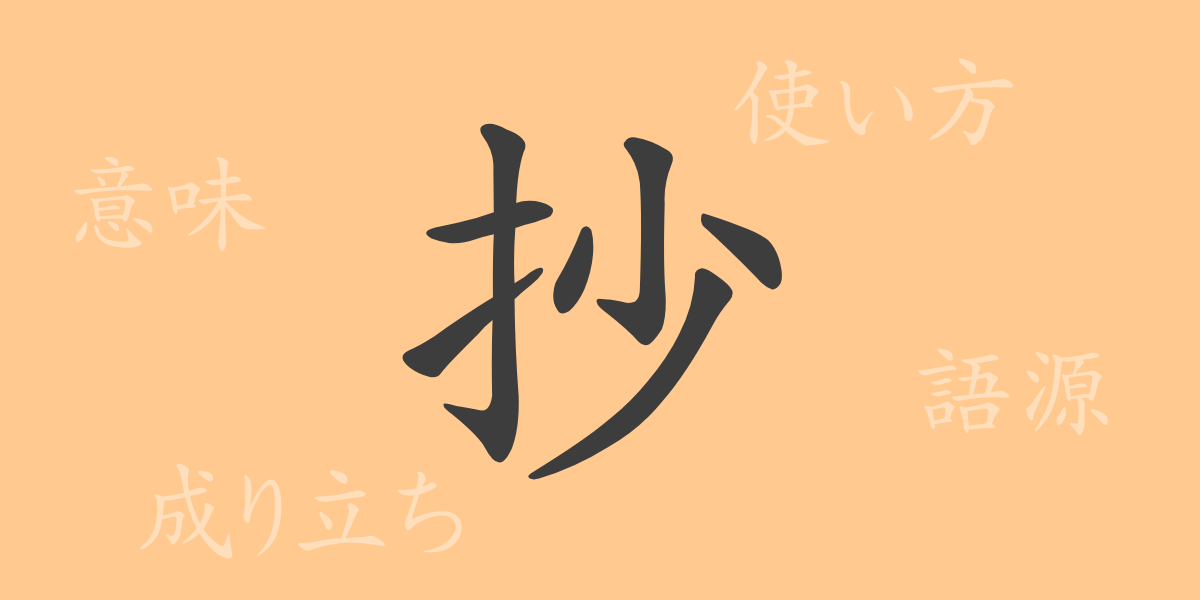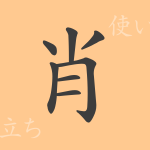The Japanese character system, with each kanji having its unique personality and history, offers deep insights into the language’s richness. The kanji ‘抄’ (しょう) is no exception. In this article, we explore the depths of ‘抄’, from its etymology to its modern-day usage, and how it is employed in everyday life. Understanding the philosophy behind each kanji is a first step towards appreciating the richness of Japanese.
Origins of 抄 (しょう)
The kanji ‘抄’ originated in ancient China, combining the radical for hand ‘扌’ with the kanji for ‘little’ ‘少’, symbolizing ‘selecting little by little with hands’. It originally meant to selectively pick out, evolving to signify extracting or choosing. Used in ancient China for excerpting texts, it carries such historical contexts to this day.
Meaning and Usage of 抄 (しょう)
‘抄’ is used to denote excerpts or summaries. It refers to the act of extracting and condensing important parts from documents or writings. It also describes collections of selected poems or writings, highlighting its role in filtering and succinctly conveying information.
Readings, Stroke Count, and Radical of 抄 (しょう)
The kanji ‘抄’ brings order and beauty to our language with its structure and readings.
- Readings: The On’yomi (Sino-Japanese reading) is ‘しょう’, with no specific Kun’yomi (native Japanese readings).
- Stroke Count: ‘抄’ consists of 7 strokes.
- Radical: The radical is ‘手’ (hand).
Phrases, Idioms, and Proverbs Using 抄 (しょう) and Their Meanings
There are numerous idioms and phrases in Japanese that include ‘抄’, enriching both literature and everyday conversation.
- 抄録 (しょうろく): An abstract or a compilation of essential parts from texts or books.
- 抄本 (しょうほん): A book created by extracting crucial parts from the original.
- 抄訳 (しょうやく): A summarized and simplified translation of a text.
- 手抄本 (てしょうほん): A manuscript hand-copied, particularly referring to those made before the advent of printing technology.
Conclusion on 抄 (しょう)
The kanji ‘抄’ plays a critical role in the selection and summarization of texts and documents. From its origins, it has been deeply involved in how we organize and communicate information. Engaging with idioms and phrases that use ‘抄’ allows us to deepen our understanding of words and enrich the expressive power of Japanese. This small kanji plays a significant role in communication, reminding us to continually refine our skills in selecting and summarizing our words daily.

























